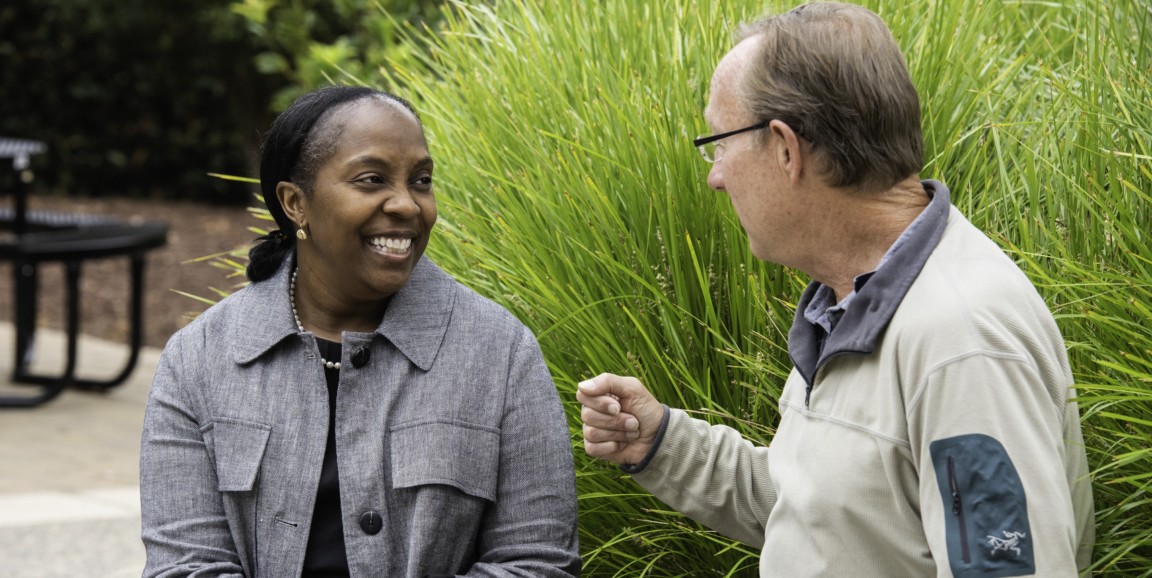Six years ago, Brett, an avid bicyclist, signed up for a coast-to-coast charity bike ride from Santa Barbara, California, to Charleston, North Carolina.
But in Oklahoma, 1,000 miles from the completion of the ride, Brett endured a life-threatening fall that left him with a subdural hematoma, among the deadliest of all head injuries. His brain began to swell as blood pooled on the outside of his brain. He was in a coma for nine days, and, in an effort to effectively create space and remove blood as the brain swelled, a trauma team in Missouri removed a part of his skull. Brett was then transferred to Stanford to continue his treatment.
In the video and an accompanying Stanford Health Care story, Brett relays the neurological obstacles he was determined to overcome. The accident left him with short term memory loss and minor seizures, and it impacted the right side of his brain, which is responsible for his ability to control the left side of his body.
He was treated by neurosurgeon Odette Harris, MD, who used a bone implant to replace the section of his skull removed after the accident. Later operations aimed to manage his surgical wound healing and to create a skin flap to cover his skull.
"Once we get patients through that period of survival, then we start looking at the period of recovery and rehabilitation," Harris explains in the video.
With trauma patients, Harris said she works to develop a relationship that allows them to personalize a patient's recovery. For Brett, that meant making exercise an integral part of his recovery and daily routine, as he clocked his steps, miles he rode on his stationary bike, and sleep cycles, and recounted his daily progress in emails to Harris.
She explains:
The Stanford environment allows someone like Brett to truly recover in a way that's tailored to what he needs. We're integrating not only brain injury specialists, but we're integrating trauma specialists, specialists in orthopedics, specialists in ENT, and plastic surgery. Because of the integrated care we have, Brett has just excelled.
Six years later, Brett no longer has issues with his short term memory, or any other reoccurring issues. He has returned to his active lifestyle, walking 40 to 70 miles every week. He even dedicates time to share his experience with other traumatic brain injury patients and Stanford neurology and neurosurgery residents.
Neurologist Scheherazade Le, MD, says:
Brett was determined to make exercise a part of his daily routine, and I think that helped strengthen his recovery and brain function... His story is so inspiring and gives so much hope to me as a doctor and to other patients who need intense neurologic recovery.
Photo of patient and Odette Harris by Steve Fisch




